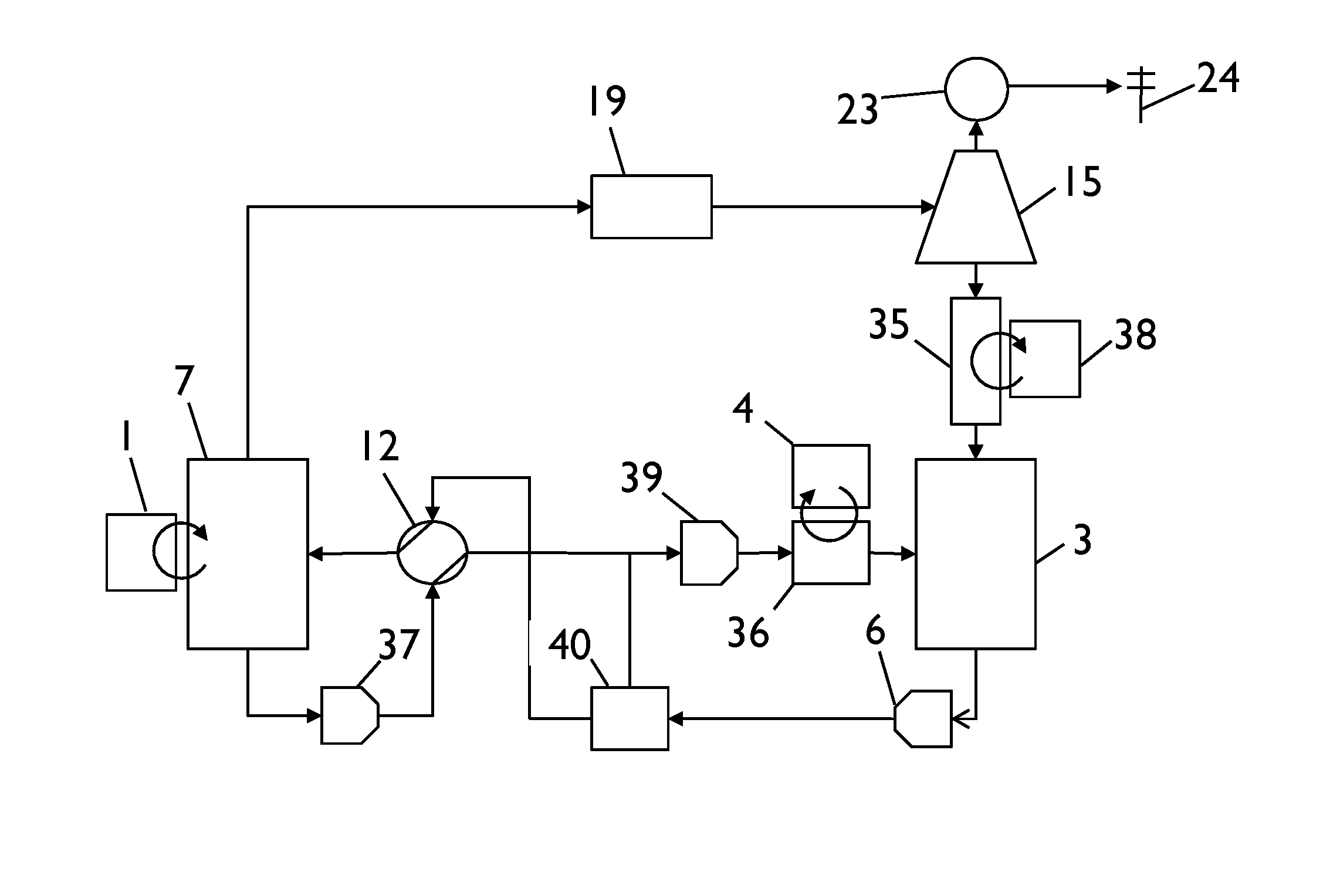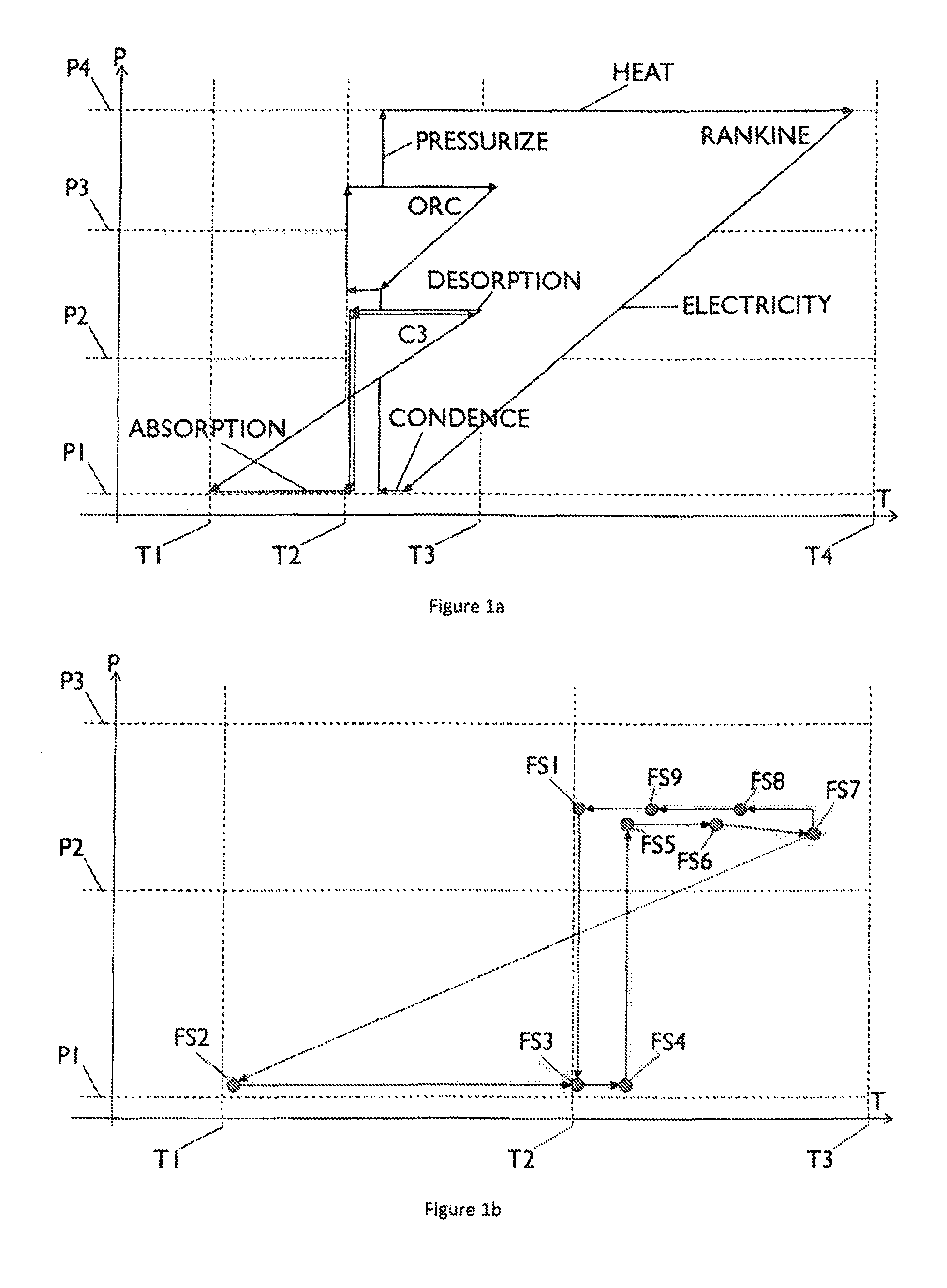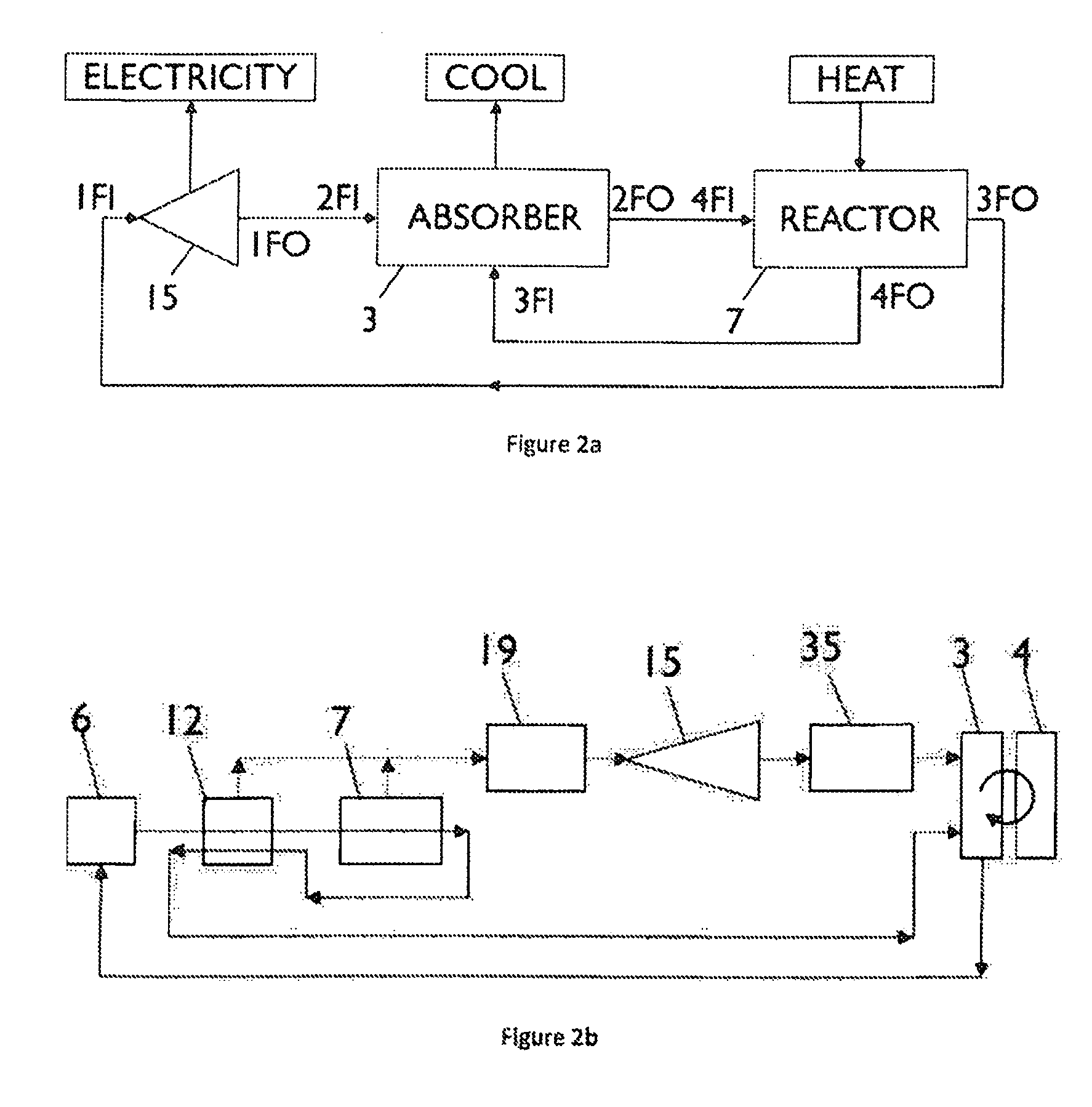Method for conversion of low temperature heat to electricity and cooling, and system therefore
a low temperature heat and electricity technology, applied in the field of low temperature heat conversion to electricity and cooling, can solve the problems of no thermodynamic cycle known to directly generate electricity, heat and cold, no efficient, convenient method available today, etc., to maximize competitiveness, minimize energy loss, and keep simple
- Summary
- Abstract
- Description
- Claims
- Application Information
AI Technical Summary
Benefits of technology
Problems solved by technology
Method used
Image
Examples
Embodiment Construction
[0040]Referring now to the embodiment described in FIG. 1a, representing a generalized view of the Carbon carrier cycle with respect to other known power cycles from a pressure versus temperature perspective.
[0041]The Rankine cycle or steam cycle as described works by pressurizing and heat water to produce steam. Electricity is produced by expanding the steam from this point with P4 at typically 100 Bar and T4 at 500° C. down to below 100° C. where it is condensed back to water during cooling creating a low pressure close to vacuum.
[0042]The low temperature cycle named Organic Rankine Cycle, ORC, uses the same principle but, instead of water, employs a different working medium with a lower boiling point than water. Typically, this cycle uses a pressure range between 28 Bar to 7 Bar between 90° C. heat source and 25° C. cold source.
[0043]The Carbon carrier cycle, C3, works in a different way. Heat is used to chemically desorb CO2 from a carrier medium or working fluid. After the CO2 ...
PUM
| Property | Measurement | Unit |
|---|---|---|
| temperature | aaaaa | aaaaa |
| temperature | aaaaa | aaaaa |
| pressure | aaaaa | aaaaa |
Abstract
Description
Claims
Application Information
 Login to View More
Login to View More - R&D
- Intellectual Property
- Life Sciences
- Materials
- Tech Scout
- Unparalleled Data Quality
- Higher Quality Content
- 60% Fewer Hallucinations
Browse by: Latest US Patents, China's latest patents, Technical Efficacy Thesaurus, Application Domain, Technology Topic, Popular Technical Reports.
© 2025 PatSnap. All rights reserved.Legal|Privacy policy|Modern Slavery Act Transparency Statement|Sitemap|About US| Contact US: help@patsnap.com



